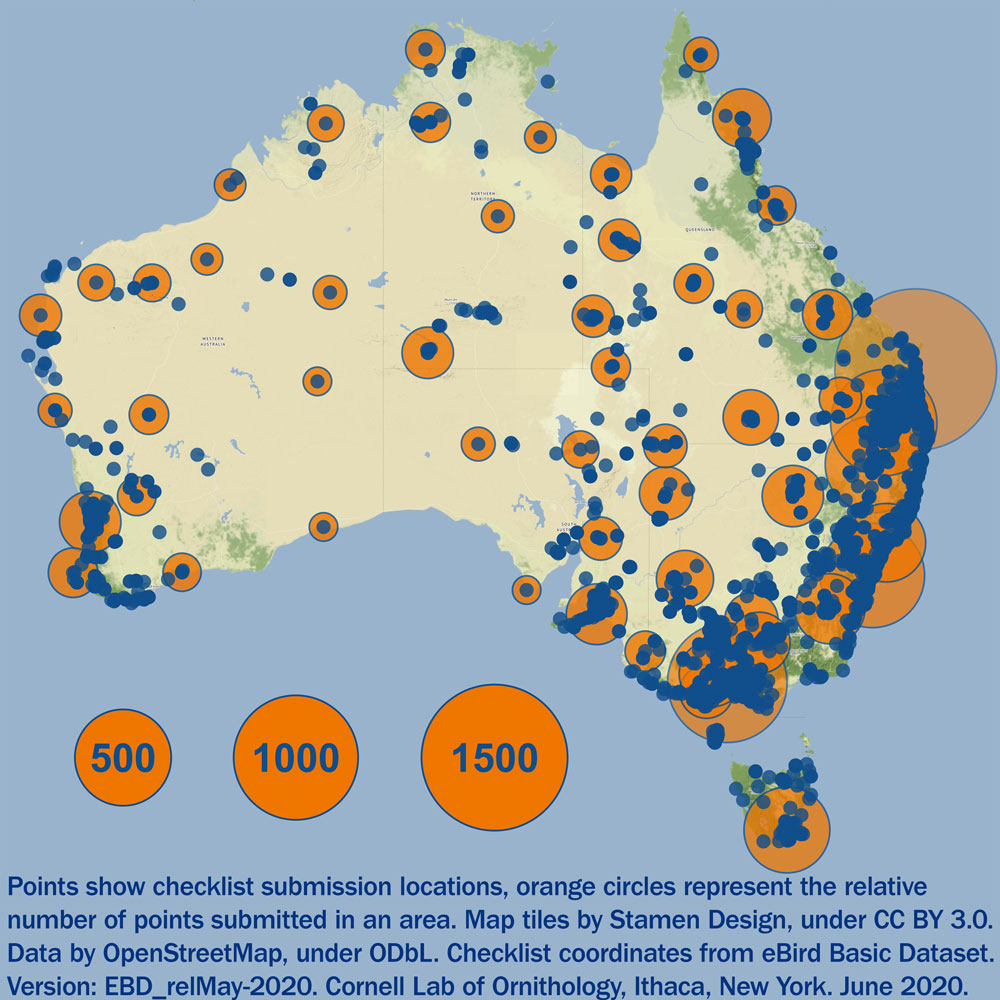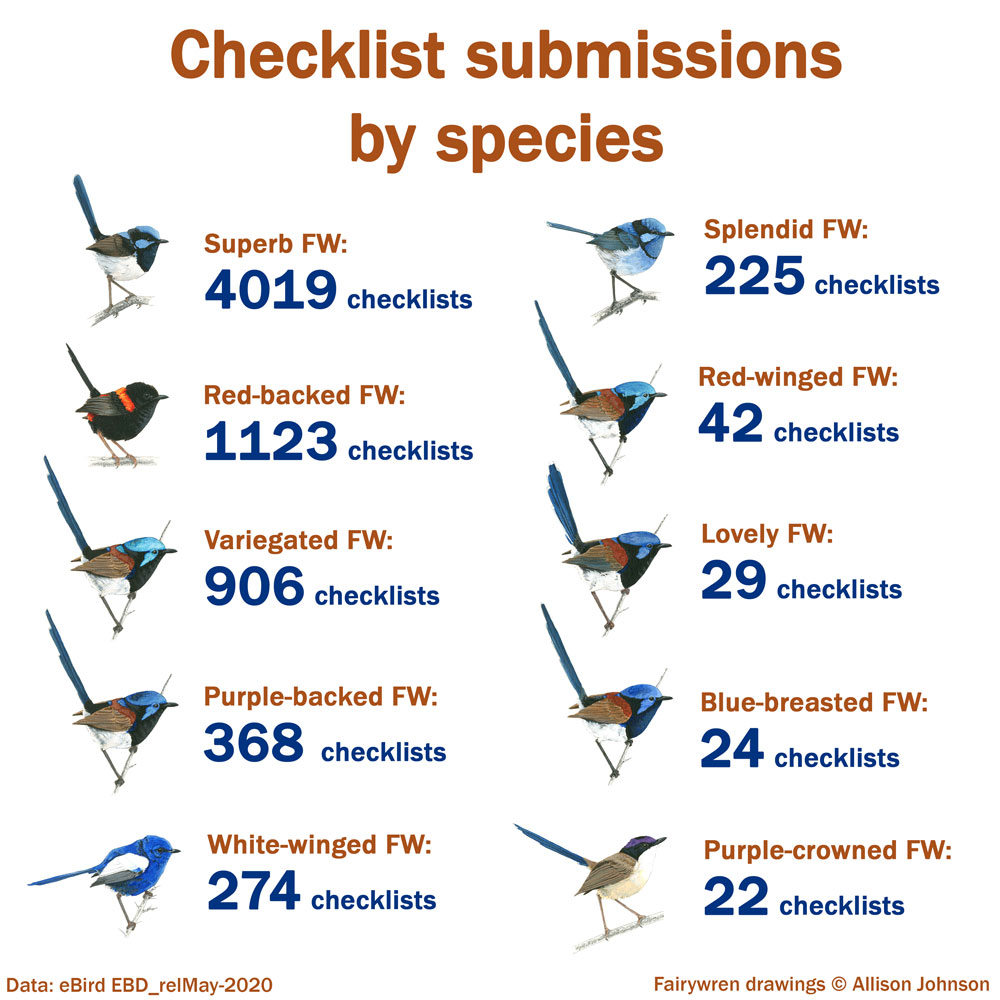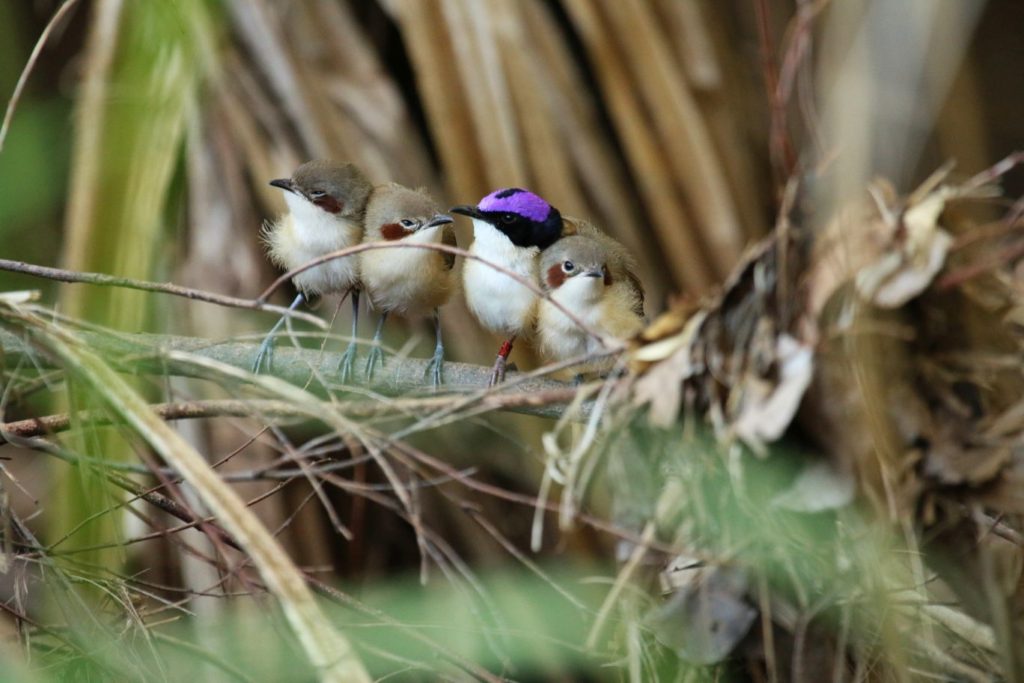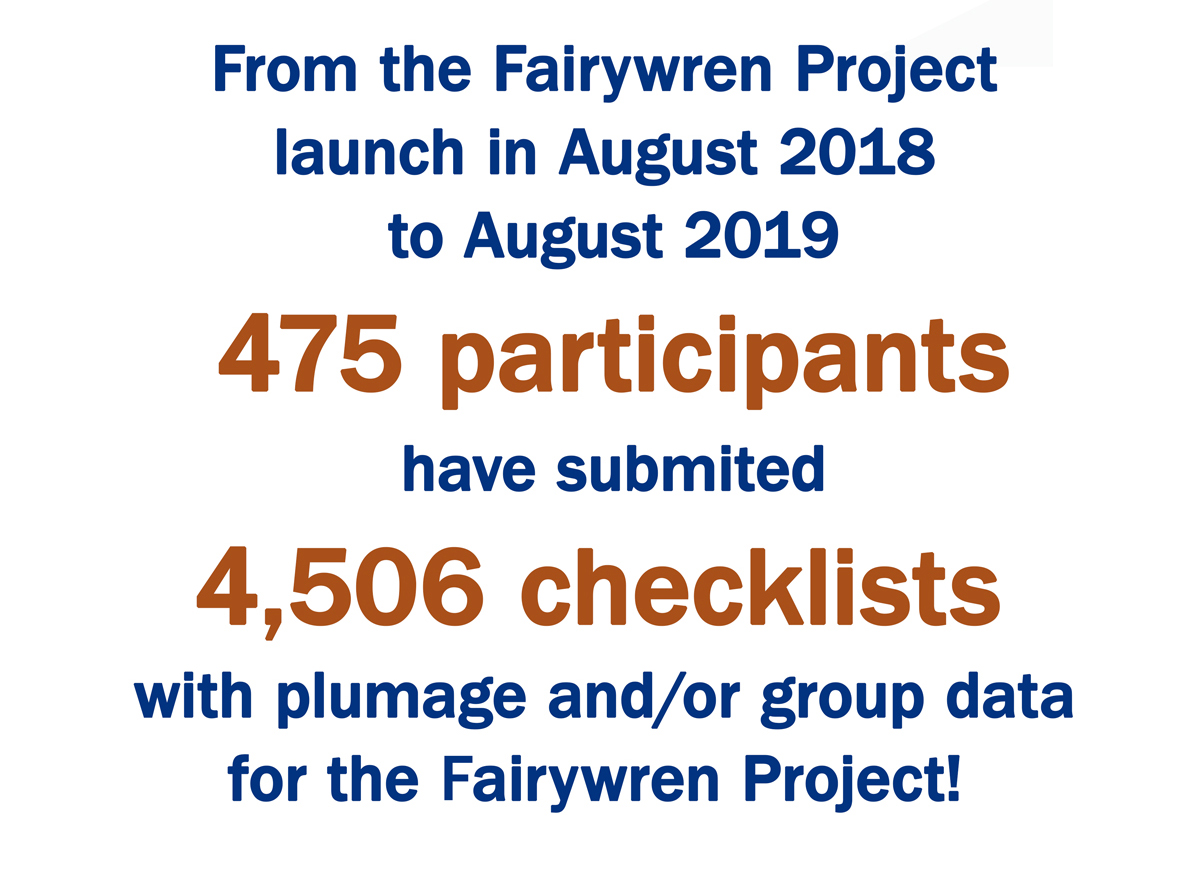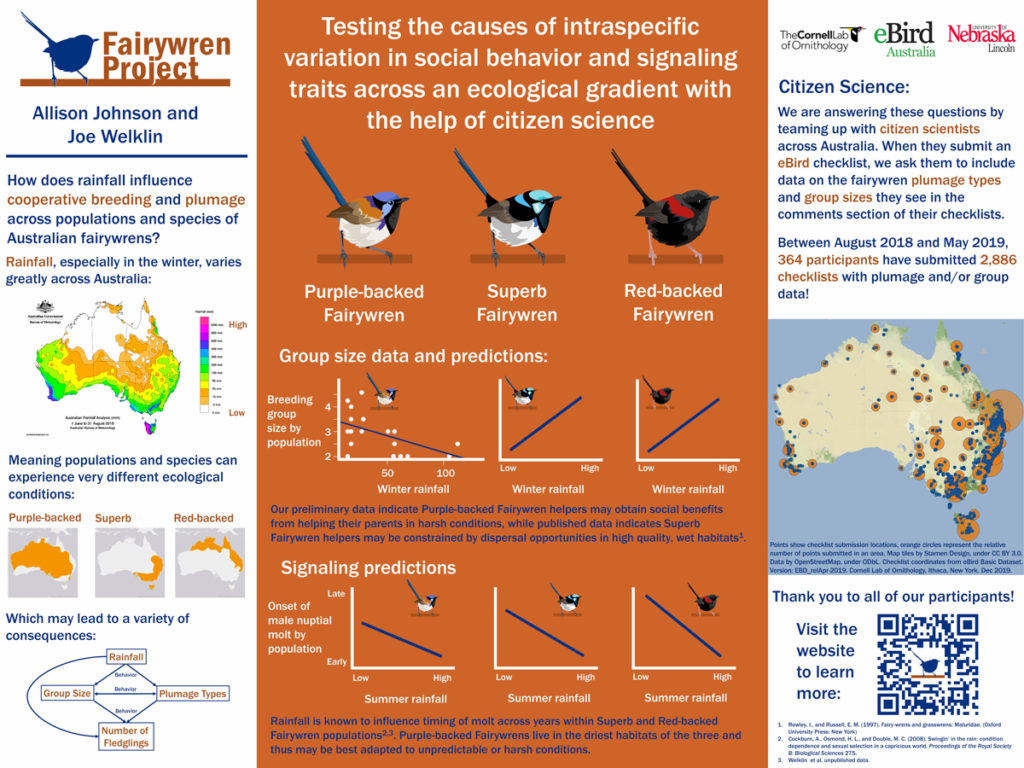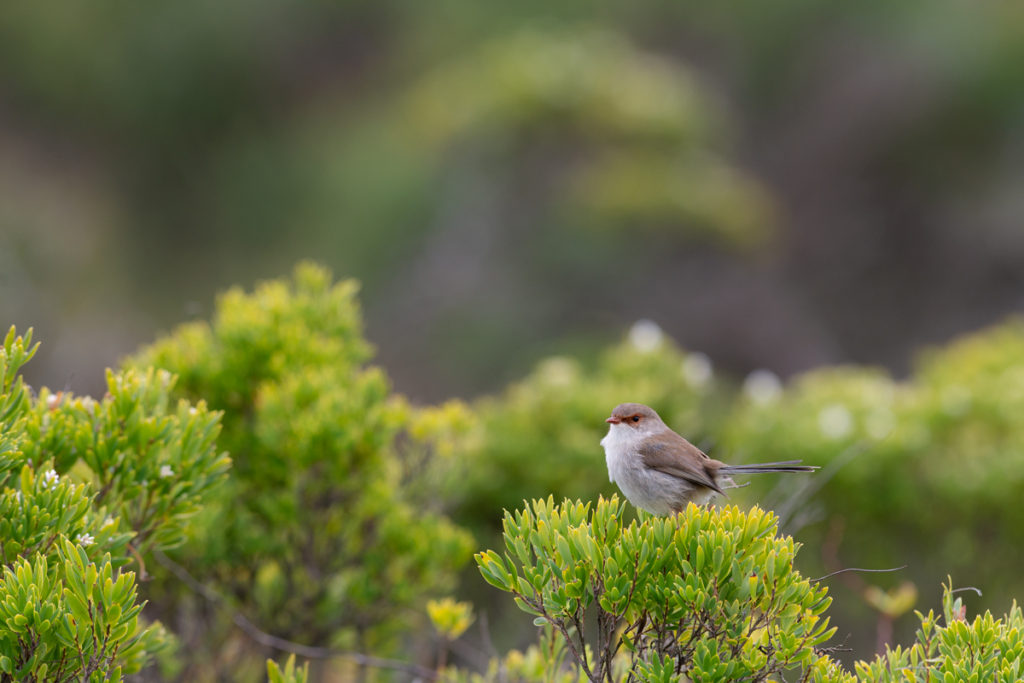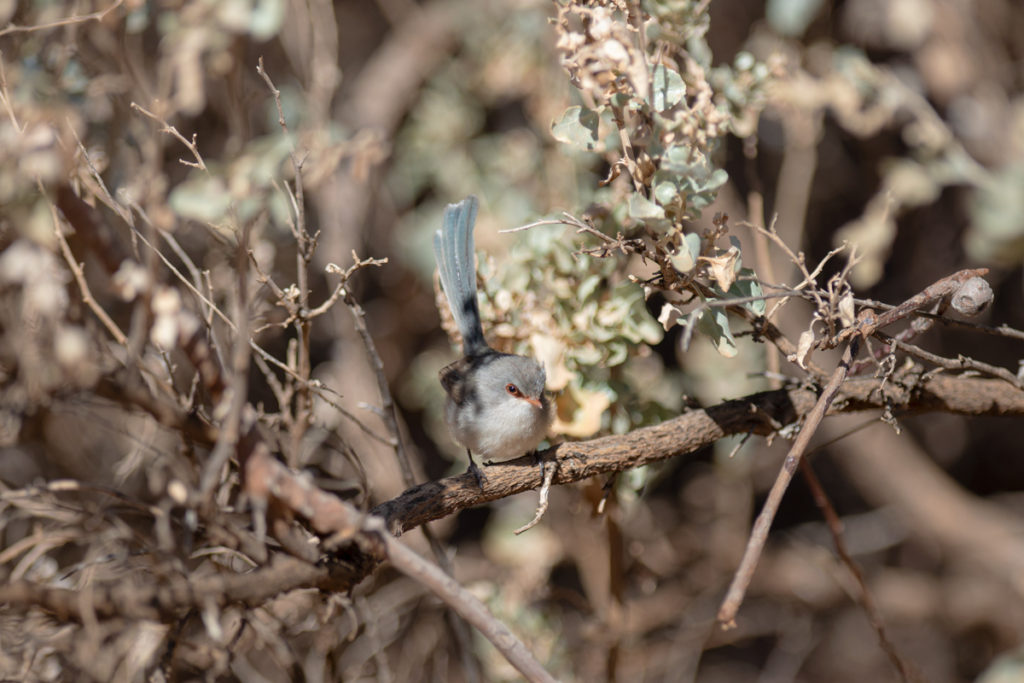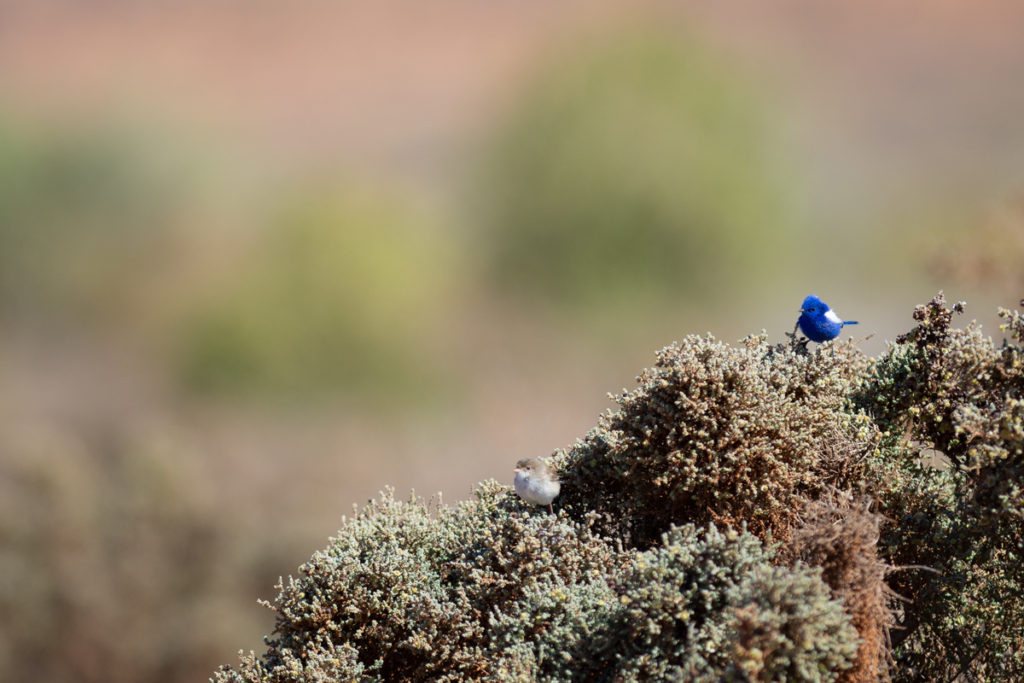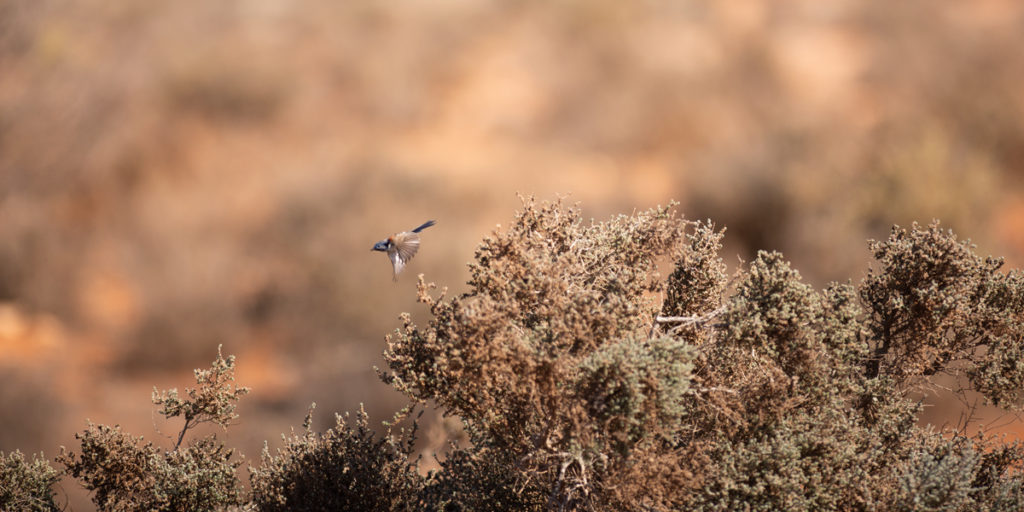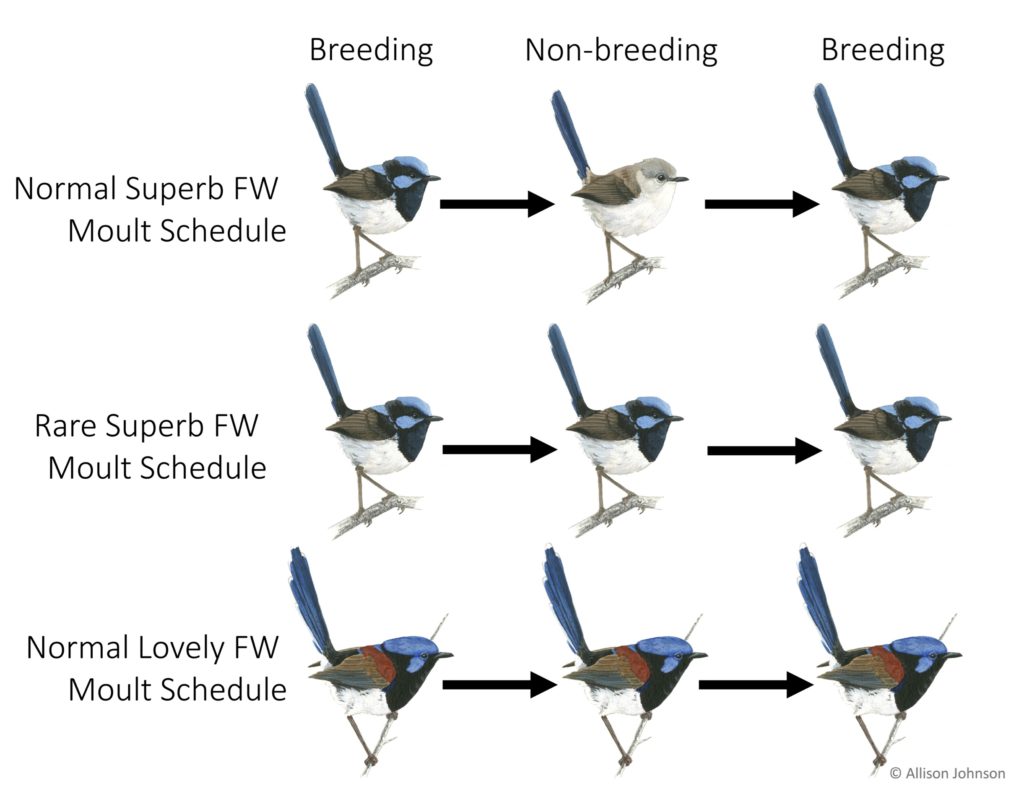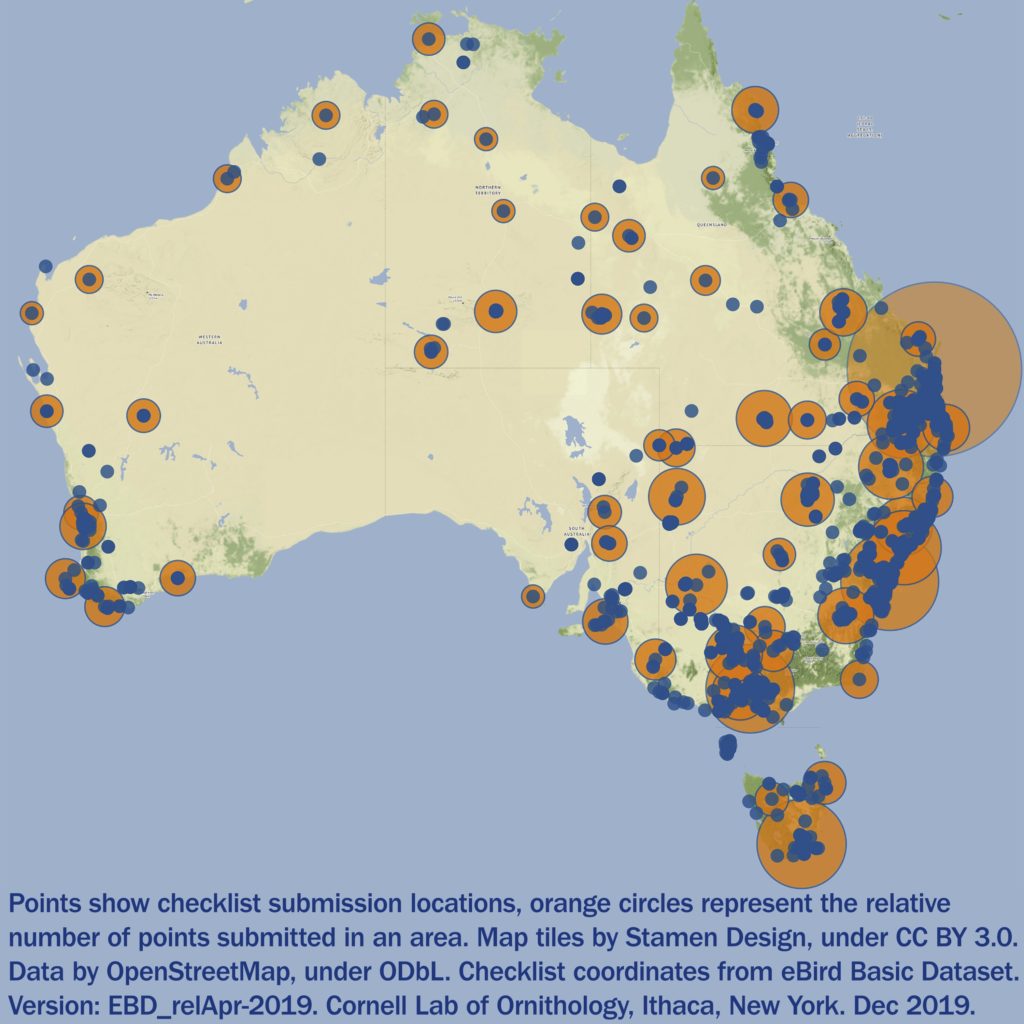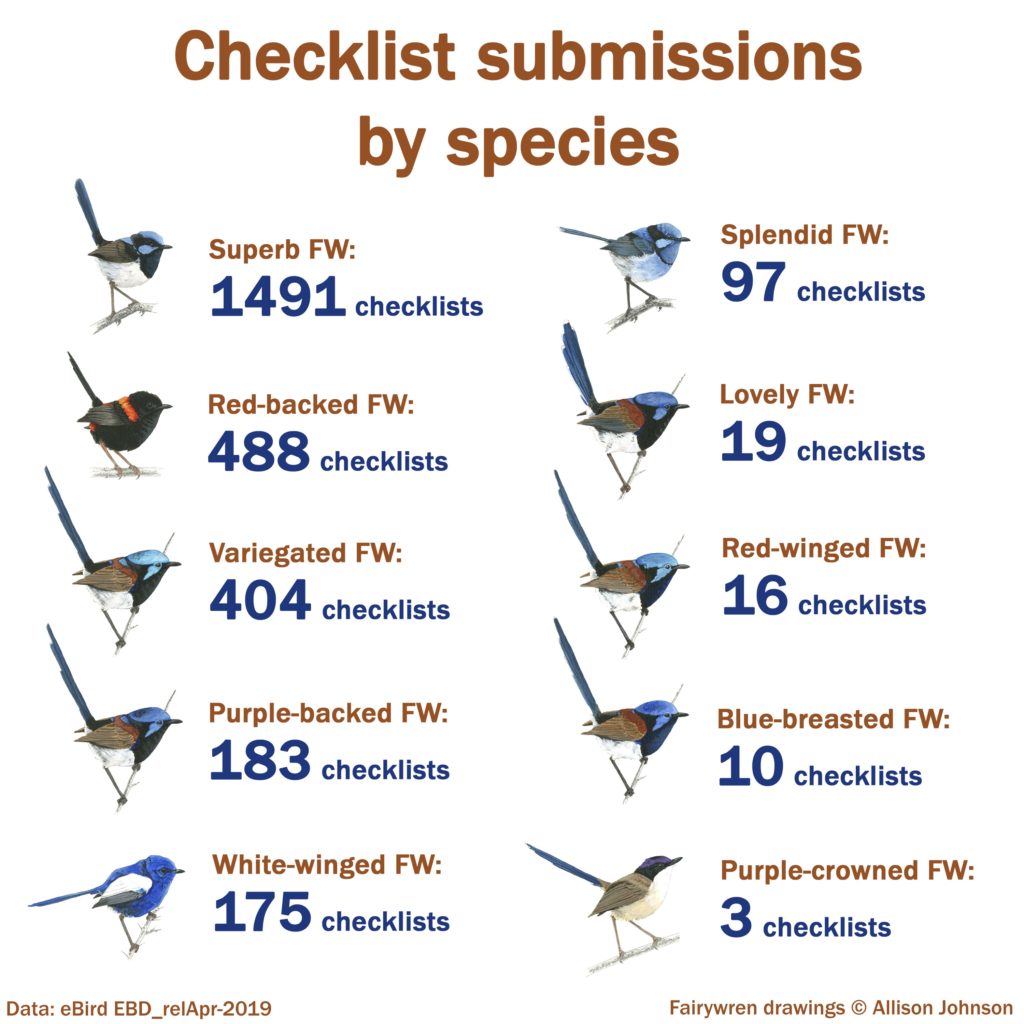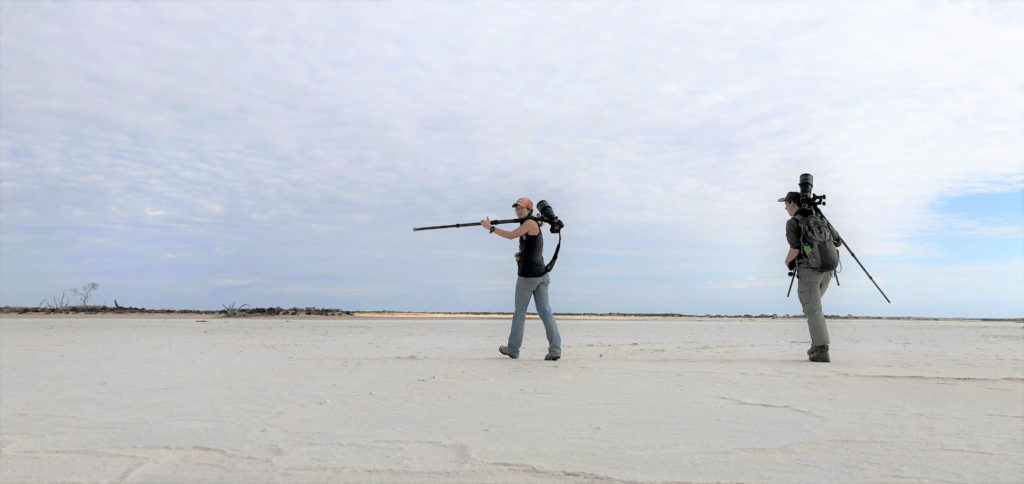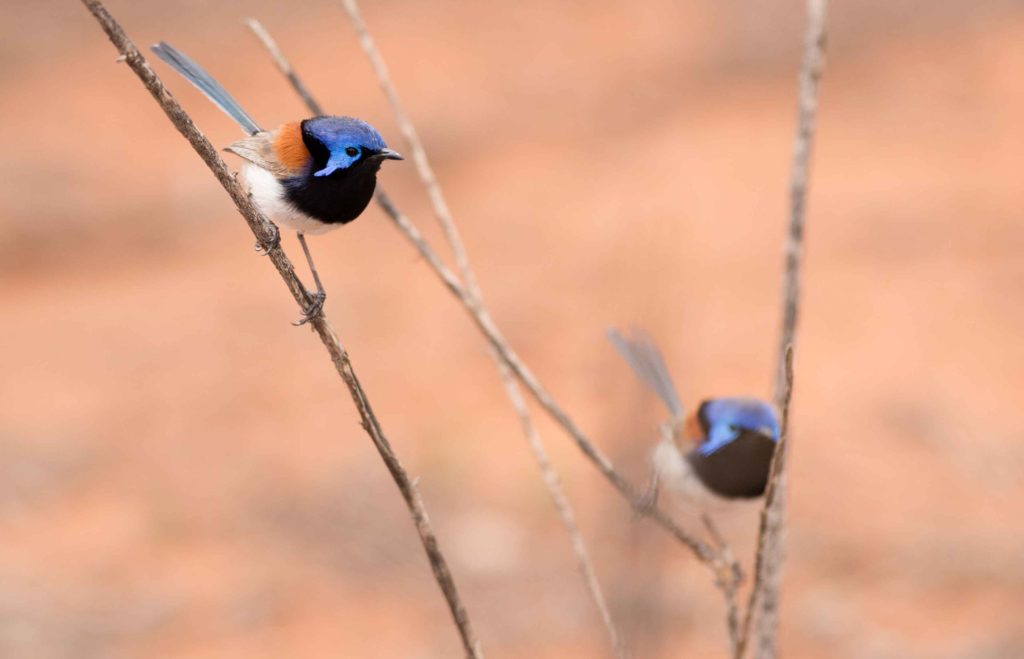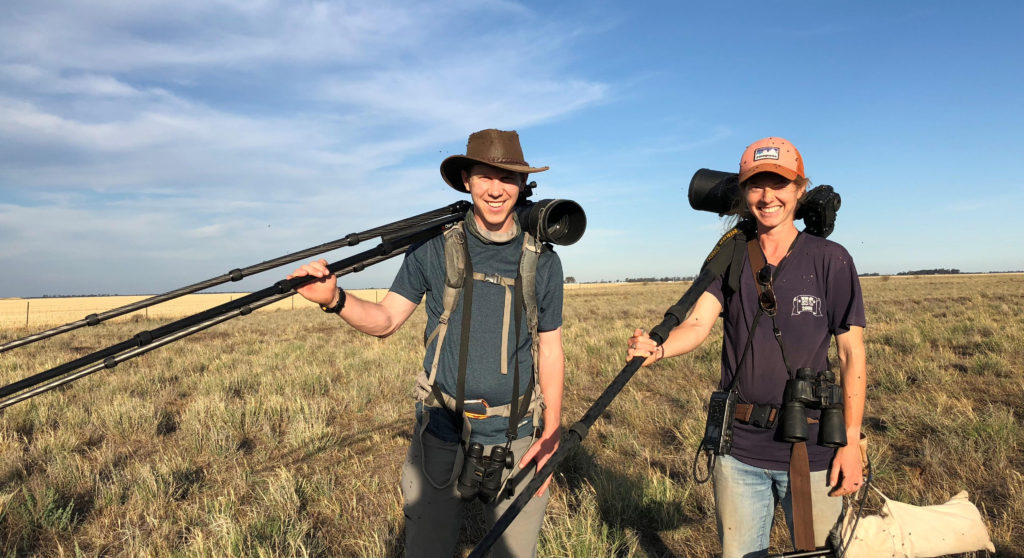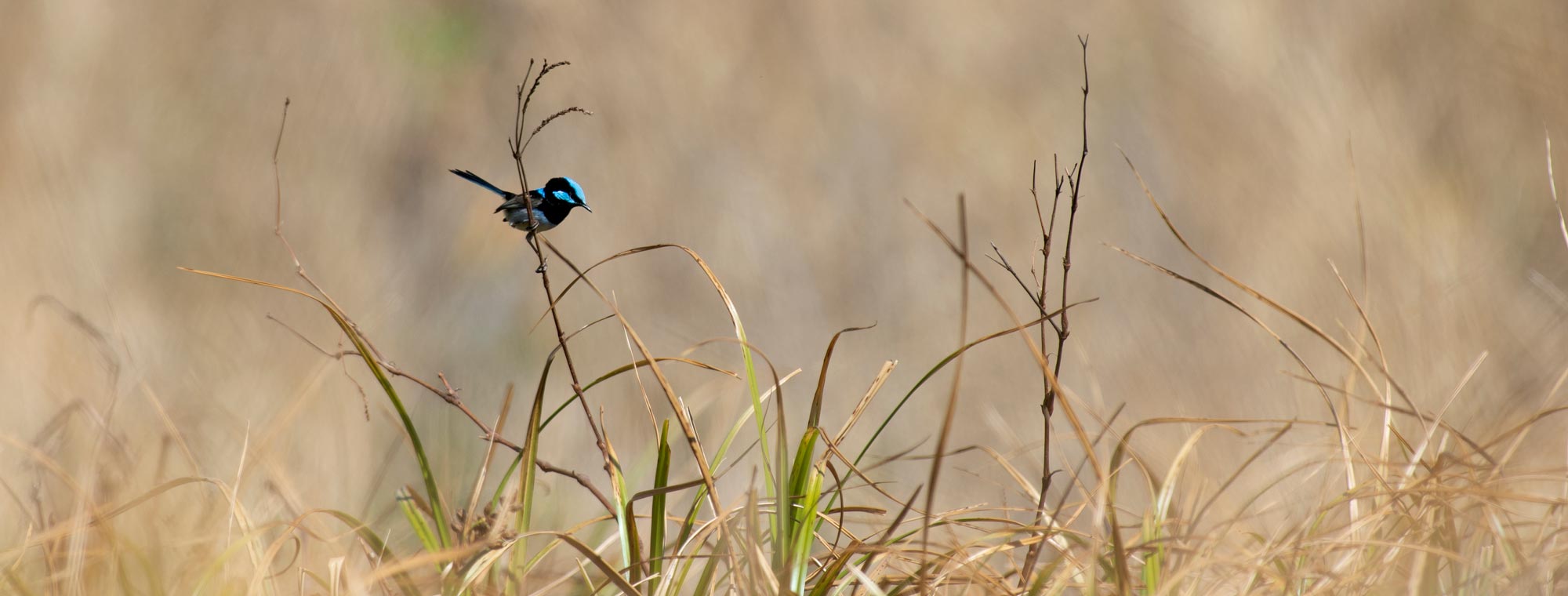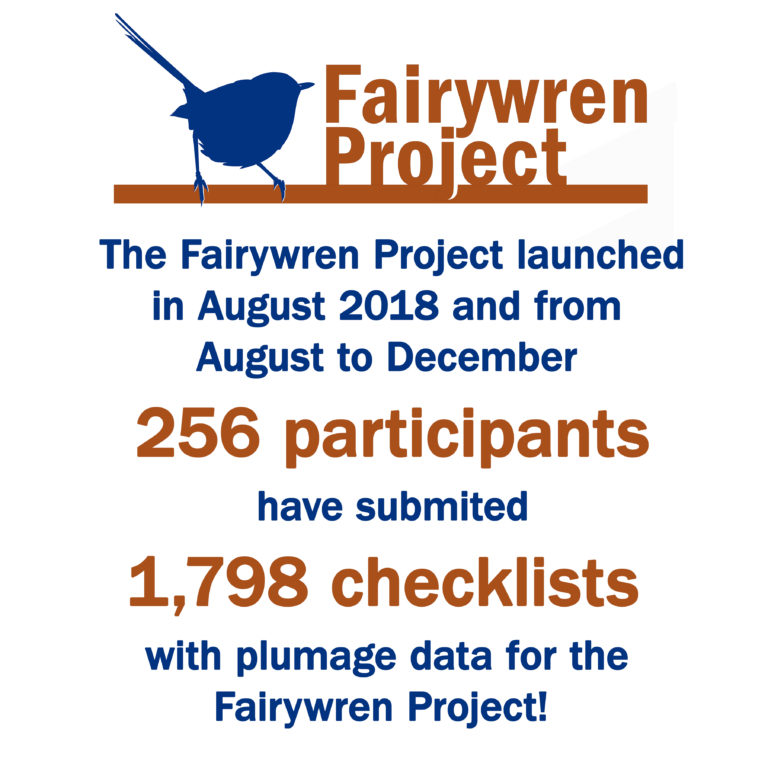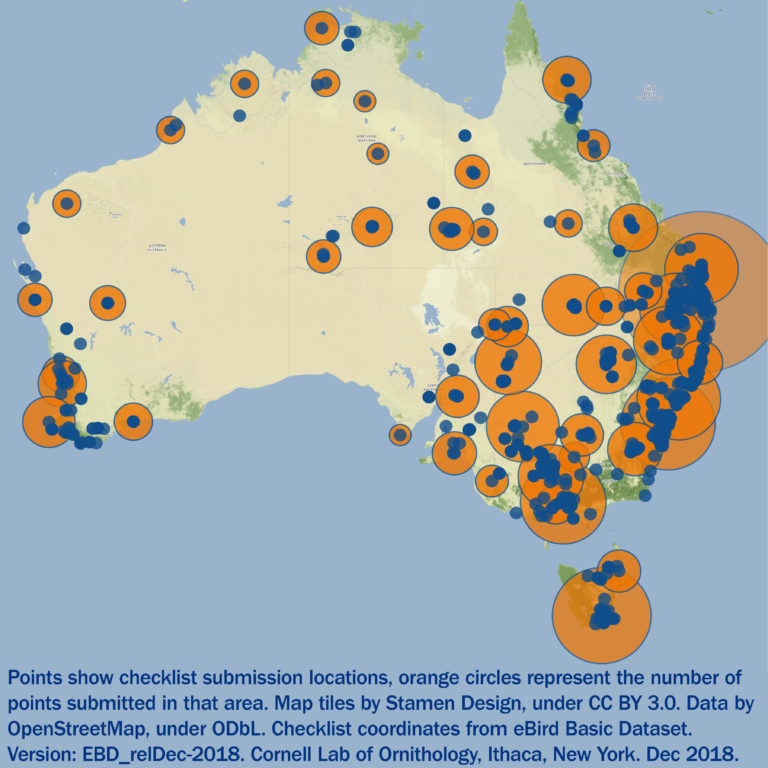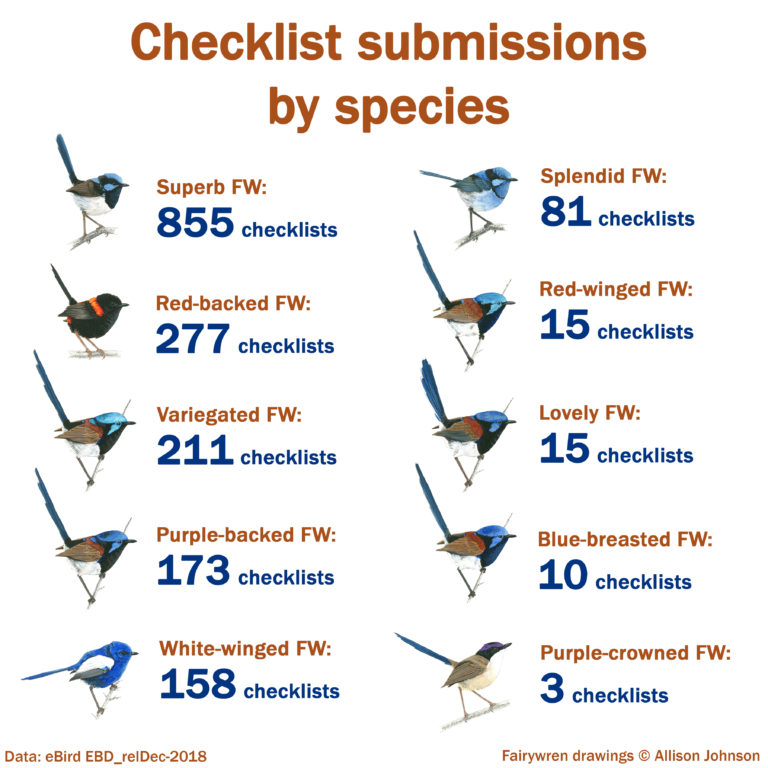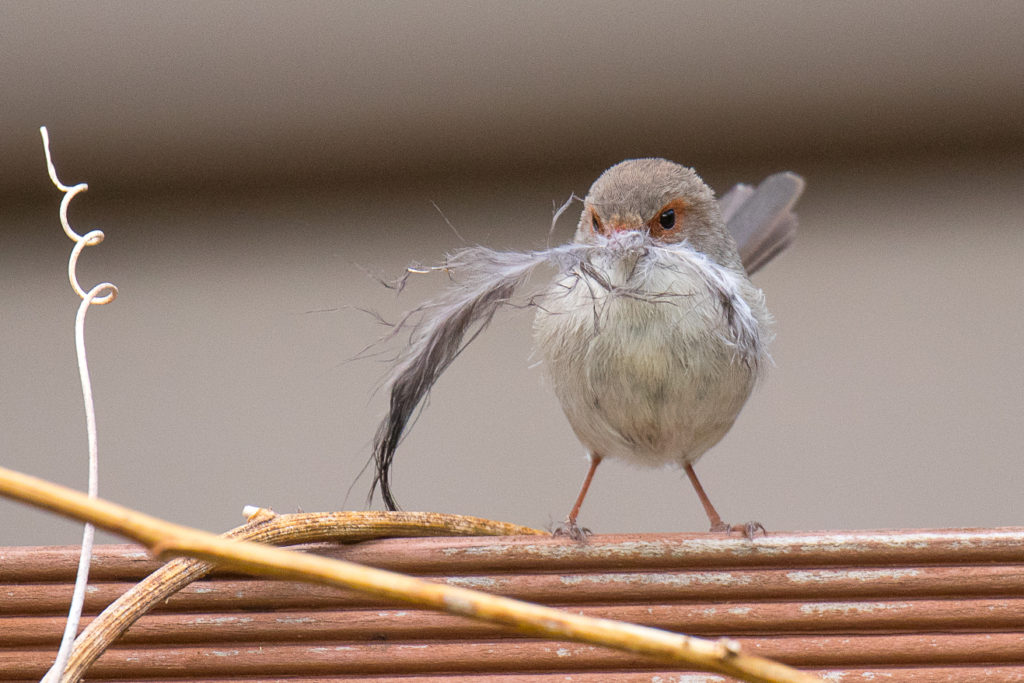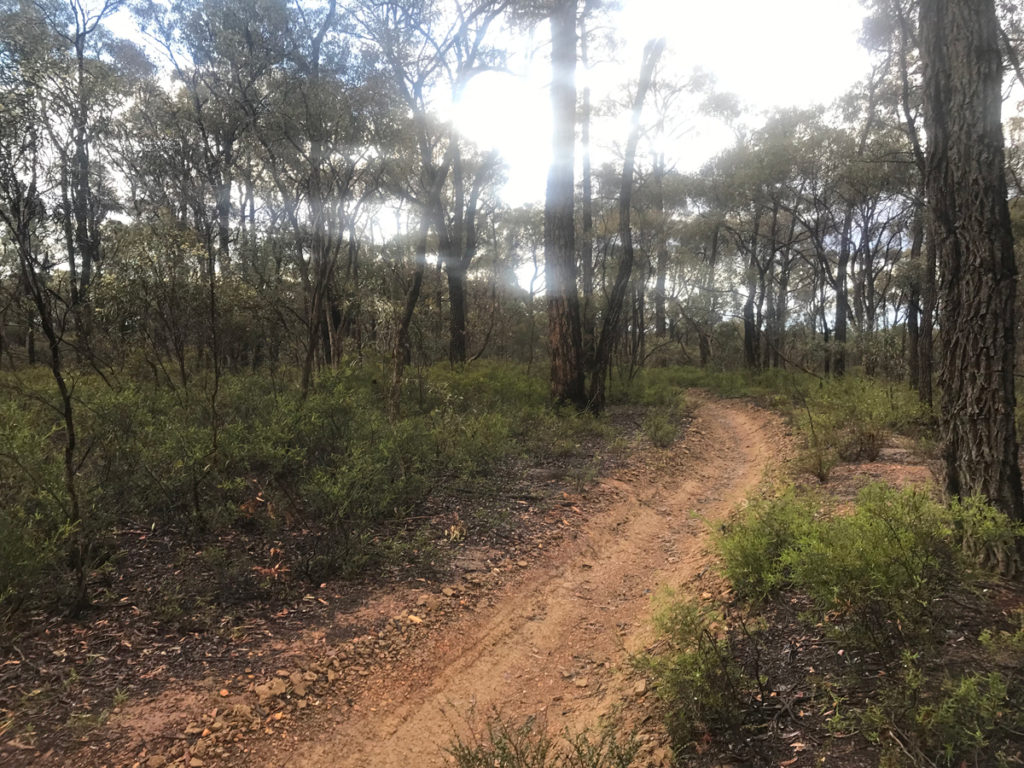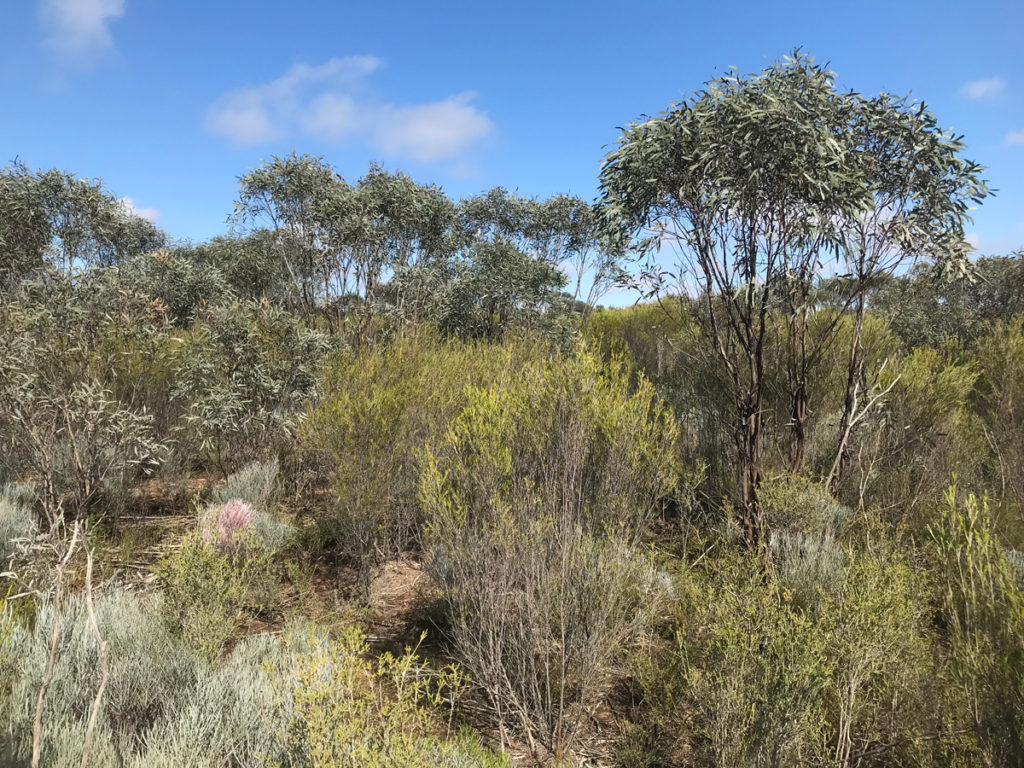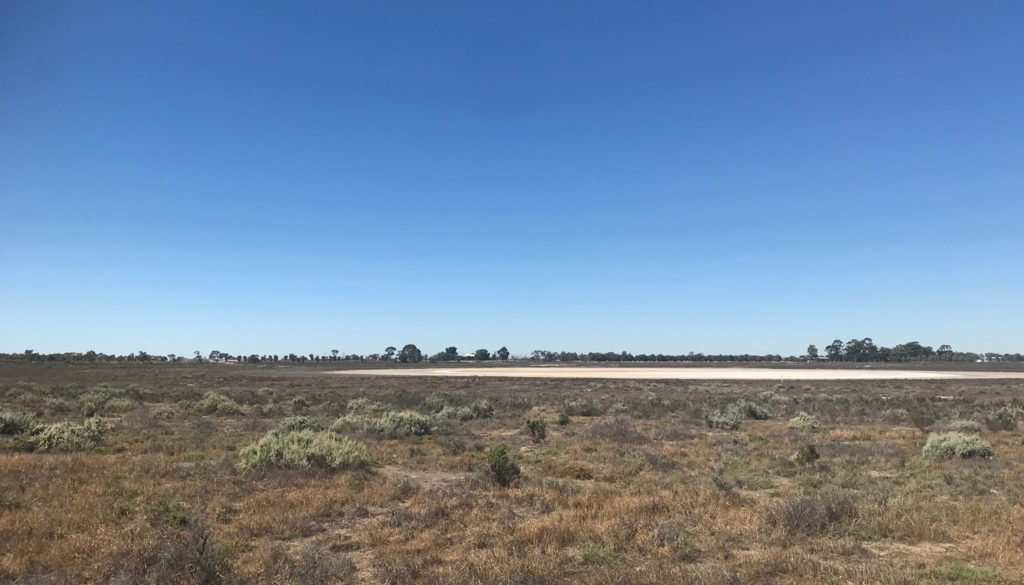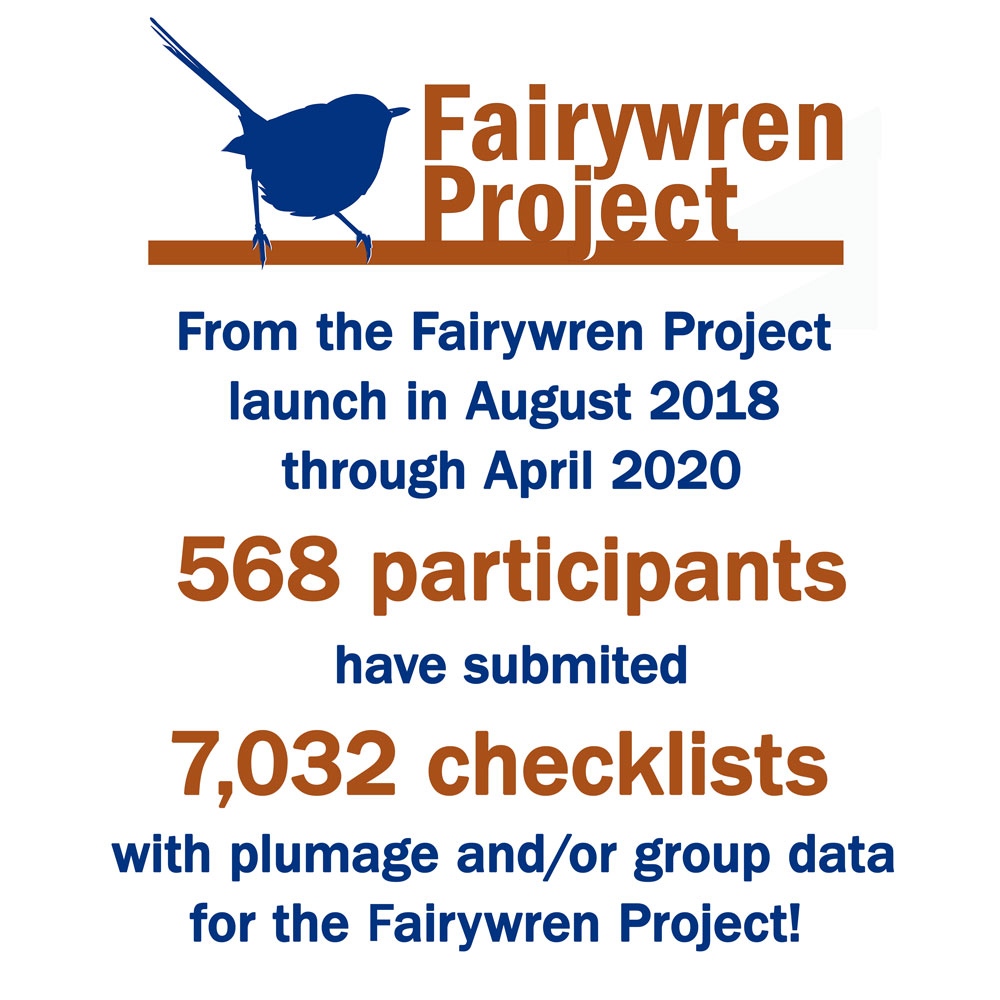
Greetings, friends!
We hope this message finds you well during trying times. It’s been ages since we’ve last sent out an update but we’re very encouraged to see you’ve been busy! Thank you! Allison and I have been busy applying for funding to expand the Fairywren Project and turn it into our full-time research while also completing some other projects.
I (Joe) have been finishing up my PhD research on the social and ecological drivers of moult into nuptial plumage in Red-backed Fairywrens and I plan to defend my PhD sometime this spring (southern hemisphere)/fall (northern hemisphere). My collaborators and I are finding some really interesting results for the Red-backed Fairywrens. It turns out that how social Red-backed Fairywren groups are during the winter depends on weather conditions. In wet periods, the birds are less social and more territorial, while in dry periods they sometimes form large flocks, potentially to work together to find food. During my work we sometimes saw flocks in dry periods that contained 35 Red-backed Fairywrens at once! Talk about a lot of tiny birds to keep track of.
These findings are really exciting because they’re a tiny window into what we’re hoping to find with the data you’re submitting to us through eBird. Will all Red-backed Fairywren populations behave the same way my study population near Brisbane did? Will all fairywren species respond to rainfall in the same way? We don’t know! Preliminary evidence indicates that different species do respond to their environment in different ways, but we have lots more work to do.
Allison has been publishing more of her work from her study population of Purple-backed and Splendid Fairywrens outside of Adelaide. Some new work from her and her colleagues will be important in furthering our understanding of why fairywrens are social in the first place. The cooperative breeding we see in fairywrens is really quite odd in the animal world. For fairywrens it’s common that a young male will remain with his parents in his first breeding season and help his parents raise his siblings, but in some species like Purple-backed Fairywrens even young females will even join a group and help raise the group’s offspring!
Once we complete these previous commitments, we’ll be really diving into the data you’ve been sending us for the last year and a half now. In every grant application we’re submitting we have been including your participation numbers as evidence of the power of citizen science and the team we can make together. So thank you for your help!
And you have been busy, here are our numbers from August 2018-April 2020. So good to see more checklists coming in from all over Australia!
Let us know if you have any interesting observations or good pictures! We always enjoy seeing them.
Joe and Allison
